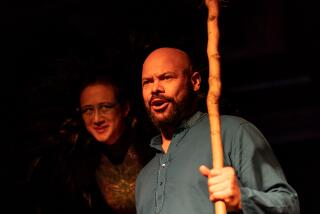For Emerald Fennell’s ‘Saltburn,’ it was go goth or go home

- Share via
I’ve always been obsessed with the gothic. Whether it was Edward Gorey’s children who are variously choked by peaches, sucked dry by leeches or smothered by rugs; Du Maurier’s imperiled heroines or the disturbing erotic power of Angela Carter’s fairy tales, the gothic world has always had me in its grip. It’s a genre where comedy and horror, revulsion and desire, sex and death are forever entwined, where every exchange is heavy with the threat of violence, or sex or both.
With “Saltburn,” I wanted to write a gothic story or, more specifically, a story that took its cue from the literary sub-genre of the English Country House Gothic. “Rebecca,” “Brideshead Revisited,” “The Go-Between” — these stories are so familiar to us, the beats so reassuringly consistent, we know where we are the moment the wrought-iron gates part — or at least we think we do. I like familiar stories: I like the squeak they make when you squeeze them really hard.
In this familiar story, there is always a first-person narrator, sucked into a world beyond their comprehension. A framing narrative where this person looks back on a time that froze their life completely, that left them trapped, forever combing over every detail, trying to make sense of it all. There are familiar characters too, the Innocent Bystander, the Doomed Romantic Hero, the Desperate Sister, the Jealous Rival, the All-Seeing Butler and the house itself, which is inescapably the main character, never changing, and impervious to the people who live in it.
The Oscar nominee is going to surprise, shock and delight viewers who thought they knew him with his multi-faceted turn in the Emerald Fennell film.

In this case that house is Saltburn, and its residents are the Catton family, who absorb the guileless Oliver Quick into their fantasy life over the summer of 2007.
It makes sense to me now that “Saltburn” is a project I finished writing during the lockdown of a global pandemic, a time when all of us were forced into the position of permanent voyeurs, where parasocial relationships became all-consuming. There was nothing to do but watch, poring over the details of other people’s lives, their houses, their clothes, their food, their families.
The intimacy with which we were acquainted with these strangers was startling and unprecedented and entirely one-sided. The beautiful strangers never looked back — how could they? For a long time, these potent imaginary friendships — inevitably descending into self-loathing, jealousy and a sado-masochistic inability to look away — replaced all human contact.
“If the actors have any downtime, they go and sit in the greenroom, whether they’re the lead or they’ve got one line,” the director says.
It was the very definition of “look but don’t touch.” We weren’t allowed to be in a room together, let alone swap the kind of fluids that humans need to swap not just for joy but for survival. What did this do to us? What happens to someone when they can’t touch the thing they so desperately want to touch? Maybe something close to the gothic madness that consumes Oliver.
After so much isolation, I wanted to write something to be watched in a dark room with strangers. Something made for the specific, disquieting intimacy of the theater. Something that made the audience aware of the person sitting next to them, that could provoke a visceral, physical response: the kind of interaction, the sticky pleasure we’d all been denied.
“Saltburn,” like so many of the books and films that precede it, is a story about restraint and its limits and what happens after the restraints finally come off. What happens when the woman locked in the attic finally gets loose?
She burns the house down.
More to Read
From the Oscars to the Emmys.
Get the Envelope newsletter for exclusive awards season coverage, behind-the-scenes stories from the Envelope podcast and columnist Glenn Whipp’s must-read analysis.
You may occasionally receive promotional content from the Los Angeles Times.












